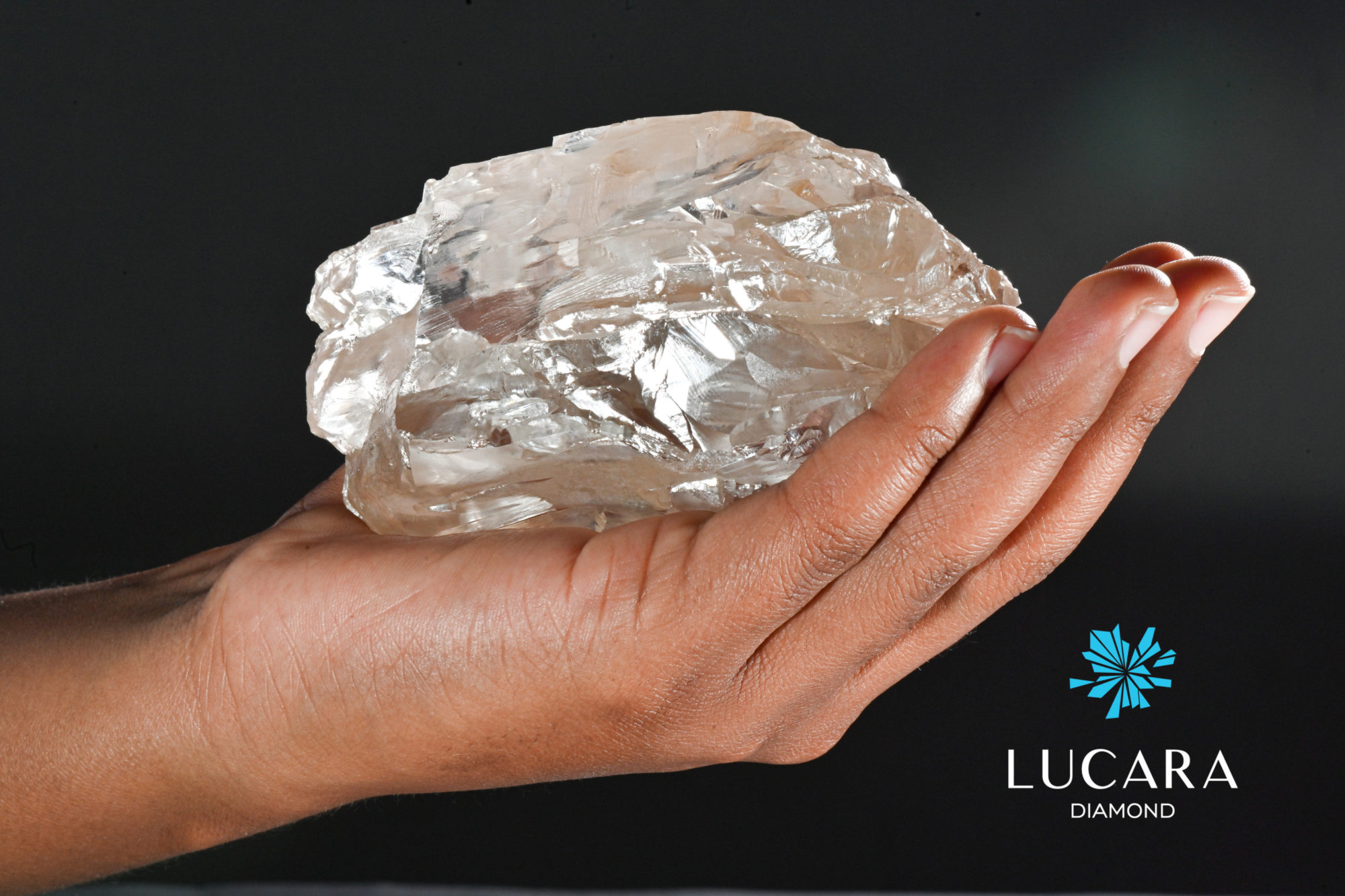One of the largest rough diamonds in recorded history, a 2,492-ct stone, was recovered recently by Lucara Diamond Corp. with TOMRA X-Ray Transmission (XRT) technology aiding the recovery at the Karowe mine in Botswana.
This extraordinary diamond is the latest of many impressive record-breaking recoveries achieved at the mine’s Mega Diamond Recovery Plant since the installation of the two TOMRA COM XRT 1200 / D 2.0 sorters in 2017, when Lucara initiated a transformation in the diamond mining industry’s recovery process. By integrating XRT early into the flowsheet, post primary crushing, it is possible to recover liberated and free exceptionally large diamonds earlier in the process, thereby extracting revenue from the flowsheet faster and safeguarding diamond value from potential downstream damage or breakage.
The 2,492-ct stone is historically the second-largest diamond ever discovered, following the 3,106.75-ct Cullinan diamond found in 1905. However, it is the largest diamond ever recovered directly from run-of-mine ore. It was followed, just a few weeks later, by a 1,094-ct diamond – the sixth rough diamond weighing more than 1,000 ct to be recovered at the mine, and one of the top 10 largest diamonds in history.
“We at TOMRA Mining are immensely proud to be part of Lucara’s incredible journey,” Albert du Preez, Head of TOMRA Mining, says. “Our XRT technology has played a pivotal role in their historic recoveries, including the 1,758-ct Sewelô and the 1,109-ct Lesedi La Rona diamonds. These milestones are a testament to the power of innovation and collaboration in the mining industry. This achievement underscores the exceptional capabilities of our XRT technology and the dedication of our team. We are committed to supporting Lucara, and ensuring they continue to achieve remarkable success.”
Corné de Jager, Diamond Segment Manager TOMRA Mining, said: “15 of the top 23 largest diamonds, bigger than 400 ct, recovered since TOMRA XRT bulk concentration installations commenced fully in the diamond industry in 2014, were recovered with our technology – 13 of them at Lucara’s Karowe mine, which holds record-breaking finds in various categories. In fact, our TOMRA XRT technology has contributed to the recovery of seven of the top 10 largest diamonds in history at the Karowe mine.”
The exceptional find at Lucara’s Karowe mine was swiftly followed by the announcement of another remarkable recovery with TOMRA’s XRT technology in Sierra Leone. The 391.45-ct diamond was unearthed at the Meya mine in Kono District. In 2017, the famous and historic Type IIa 476.7-carat Meya Prosperity was also recovered with TOMRA’s XRT.
TOMRA’s innovative high-capacity XRT technology offers precise detection and ejection of exceptionally large and even the smaller particle sizes, and proprietary image processing deliver 100% detection in the specified size range irrespective of luminescence or surface coating, with a guaranteed diamond recovery rate above 98% and remarkably low yields, according to the company. In addition, the unique TOMRA COM XRT 300 / FR final recovery sorter featuring TOMRA’s proprietary ultra-high resolution sensor technology and precise ejection has revolutionised final recovery processing to efficiently deliver an ultra-high diamond-by-weight concentrate, thereby contributing to improved & focused downstream security and reduced hand sorting.
Today, TOMRA says it is the only manufacturer to offer a full recovery service from 2mm to 100mm with a flowsheet covering the entire process – from high-capacity concentration (+4-100 mm) to Final Recovery and Sort House applications (+2-32 mm), which includes a detailed analysis of customers’ requirements and the collaborative development of an XRT technology-based flowsheet. With its holistic approach and XRT technology, TOMRA is helping diamond operations in Africa, Canada, Brazil and other countries around the world to maximise recovery while optimising costs – with the additional benefit of a smaller environmental footprint.











